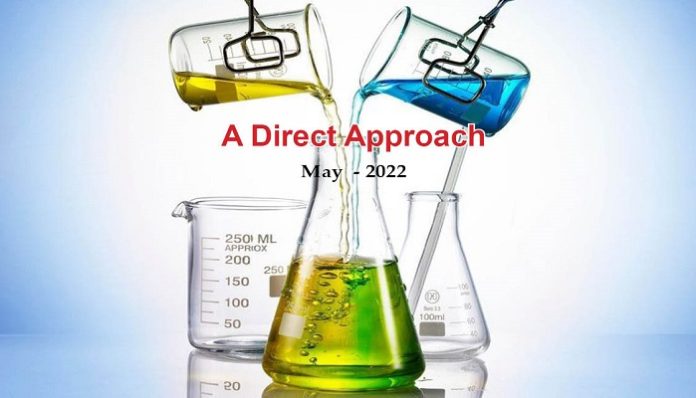Sucking out carbon dioxide directly from the atmosphere for sequestration (DAC) is gaining recognition as an important weapon in our battle against climate change. While technologies are available, no large scale plants have been built till date. A lot needs to be done to improve their efficiency and lower the costs.
Direct Air Capture (DAC) is a technology in which carbon dioxide is directly captured from atmospheric air and either sequestered in geological structures or put to profitable use. Currently, a fledgling technology, DAC is expected to soar into epic proportions by middle of this century.
Current Status
Presently, there are only 19 DAC facilities operating across Europe, USA and Canada and account for a measly 10,000 tonnes of carbon dioxide annually. As per the projections of International Energy Agency (IEA), the world would need the DAC capacity to increase to 85 million tonnes per annum by 2030 and to 980 million tonnes per annum by 2050, if we have to meet our tryst with Net Zero pledges. The largest DAC facility is currently operating in Iceland to capture 4000 tonnes of carbon dioxide annually The first large scale DAC plant to capture one million tonnes of carbon dioxide per annum is under development in USA and expected to go on stream by middle of this decade. The Net Zero scenario requires construction of 32 such large scale plants each year from now to 2050.
Two Technologies
Two technologies are widely used for DAC. In liquid systems, carbon dioxide is removed from air by passing through a chemical solution, which is subsequently regenerated by applying heat. Solid systems use sorbent filters to bind the carbon dioxide. Canada-based Carbon Engineering uses potassium hydroxide solution to absorb the carbon dioxide from air that is sucked through large structures modelled on the lines of cooling towers and filled with structured packing. The carbon dioxide rich solution is next contacted with milk of lime (calcium hydroxide) to precipitate calcium carbonate and regenerate the alkali. The precipitated calcium carbonate is calcined to release pure carbon dioxide. The resulting calcium oxide is slaked to regenerate calcium hydroxide and continue the cycle. Regeneration processes are very energy intensive. Electrochemical regeneration routes have been proposed to lower the energy consumption, but they are capital intensive. Despite their widespread deployment in commercial processes for absorption of carbon dioxide from concentrated sources, amine solutions have not been successful in DAC, where the carbon dioxide concentration of 0.04% is 2-3 orders of magnitude lower than in flue gases. On the other hand, solid-supported amines have been receiving considerable attention for DAC application.
Solid Sorbent
Solid sorbents for DAC are based on two principles: Physiosorption and Chemisorption. In physiosorption, weak Van der Waals forces are established between carbon dioxide molecules and the surface of the sorbent. Sorbents widely studied include zeolites, activated carbons and Metal-Organic Frameworks (MOF). MOFs have a much higher specific surface area than the other two and are gathering significant traction among the research community. Chemisorption involves a chemical reaction between carbon dioxide and the sorbent surface. Amine-functionalised sorbents are typically used for chemisorption. The amine may be physically impregnated on a porous support or covalently bonded to the walls of the support. In another variant, the amine monomer is polymerised in situ to create a polyamine structure that is bonded to the support. A typical chemisorption sorbent is Polyethylenimine (PEI) on microporous silica support. 14 commercial DAC plants are currently in operation across Europe using the amine-functionalised sorbent of Switzerland-based Climeworks. Climeworks employs a combination of temperature and vacuum swing desorption to regenerate the sorbent.
The energy requirement of solid sorbent systems is not significantly different from that of liquid-based systems, but the quality of thermal energy differs greatly; liquid systems require thermal energy at much elevated temperature levels. Another significant advantage of solid sorbent plants is the high degree of modularity in their design.
Contactor Design
Moving large quantities of air and bringing it in contact with the carbon dioxide capturing media is central to all DAC technologies. Pressure drop per unit surface area is widely regarded as the key metric of efficiency in DAC technologies. Contactors with high specific area per unit volume will allow weaker strength of sorbent to effect the same amount of carbon dioxide capture. Different kinds of contactors have been studied for solid sorbent DAC systems – fixed bed, fluidised bed and moving bed. Large forced draft fans are used by all the technologies today to move the air through the contactors. However, some companies are developing passive contacting approaches that rely on wind or natural air flows instead of energy-guzzling fans. Ireland-based Carbon Collect has developed 10-meter-tall “Mechanical Trees” that can passively suck out carbon dioxide from the atmosphere. Infinitree and Heirloom are two other start-ups in this space that passively allow the sorbents to soak up the carbon dioxide from the atmosphere.
Other Technologies
While sorption-based technologies for DAC have made reasonable progress, several other technologies are in various phases of early development. These are based on cryodistillation, gas separation membranes and electrochemical devices. Cryodistillation exploits the differences in the condensing and desublimating properties of gases in a mixture. An Israeli start-up, aptly named “High Hopes”, has built prototypes of hi-tech balloons that will travel to stratospheric heights to harvest carbon dioxide in the form of dry ice. Existing commercially available membranes have not yielded encouraging results for DAC due to low permeability and poor selectivity. Simulation studies have shown that a 1000-fold increase in carbon dioxide concentration to 40% is possible using a multistage membrane process. The major advantage of electrochemical technology is coupling the process with a renewable source of power. MZT, a UK-based start-up has recently closed its seed financing round of $5 million for a DAC pilot facility that will be powered only by electricity.
Public Good
It is increasingly recognised that meeting the obligations set out in the Paris Agreement on climate change will not be physically possible without deploying large-scale techniques for removing carbon dioxide already in the atmosphere. DAC is important to offset emissions from difficult to decarbonise sectors like aviation and shipping. DAC technologies don’t come cheap. Depending on the choice of technology, DAC costs are currently in the range of $250 – $600 per tonne of carbon dioxide. In comparison, fixing carbon through reforestation costs less than $50 per tonne. But whereas DAC offers a permanent solution through geological sequestration, forests are vulnerable to climate change induced threats of wildfires and droughts. Further, the DAC costs are expected to drop significantly if adopted widely on scale. Late last year, the US Department of Energy launched its “Carbon Negative Shot” initiative – an all-hands-on-deck call for innovation in technologies and approaches to remove carbon dioxide from the atmosphere and durably store it at meaningful scales for less than $100 per tonne. Ultimately, DAC cannot be viewed through the prism of profit and has to be propped up for public good through policy support.
Readers’ responses may be sent to:
k.sahasranaman@gmail.com or
chemindigest@gmail.com

































